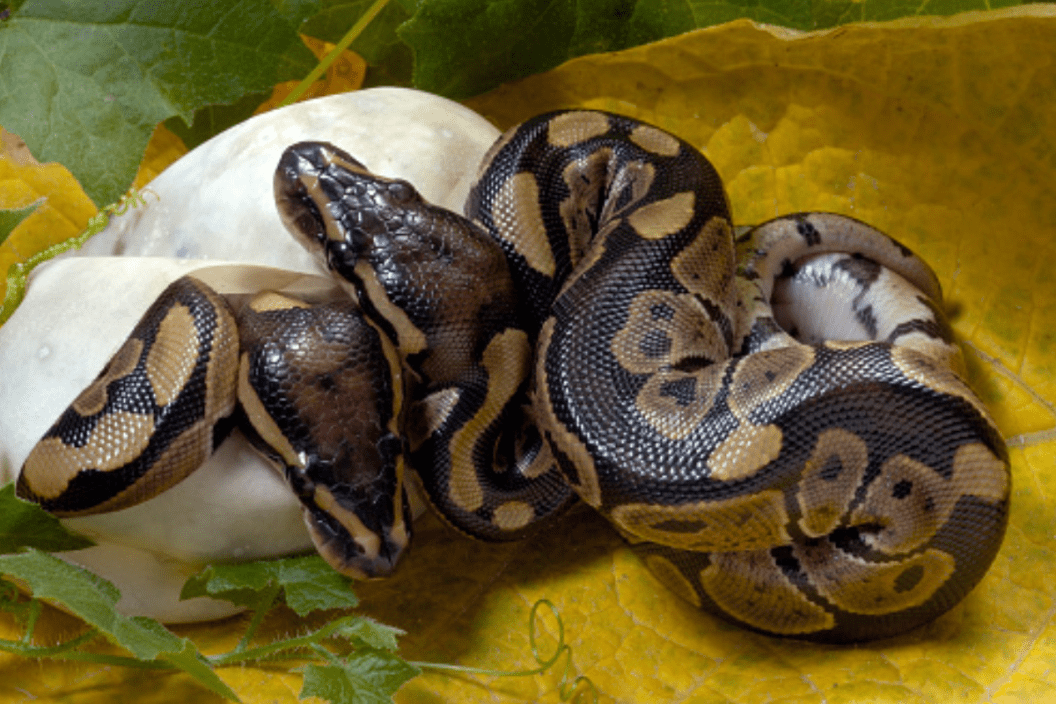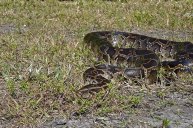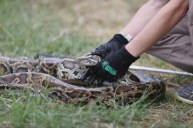Burmese Pythons—you know, the snakes that can grow so big and strong, they can squeeze the life out of an alligator—have become an invasive species in the Florida Everglades. And while researchers have traditionally thought python's lay 22 to 84 eggs at a time, a new study has uncovered the nest of a 16-foot Burmese Python that had 96 eggs, 83 of which hatched.
The research team, which is from the Fort Collins Science Center and U.S. Geological Science Center, stated that this is the largest single wild-python nest ever recorded. Burmese pythons keep to themselves, making them difficult to track, but this 16-foot female snake was followed via a radio transmitter, allowing the researchers to follow her activity as she began nesting in Big Cyprus National Preserve.
These findings may be record breaking, but the research team added there very well could be other wild python clutches around with a comparably high number of hatchlings.
While the news may be fascinating for researchers (and terrifying for the public), it doesn't bode well for Florida's native species.
How Pythons Threat Native Species
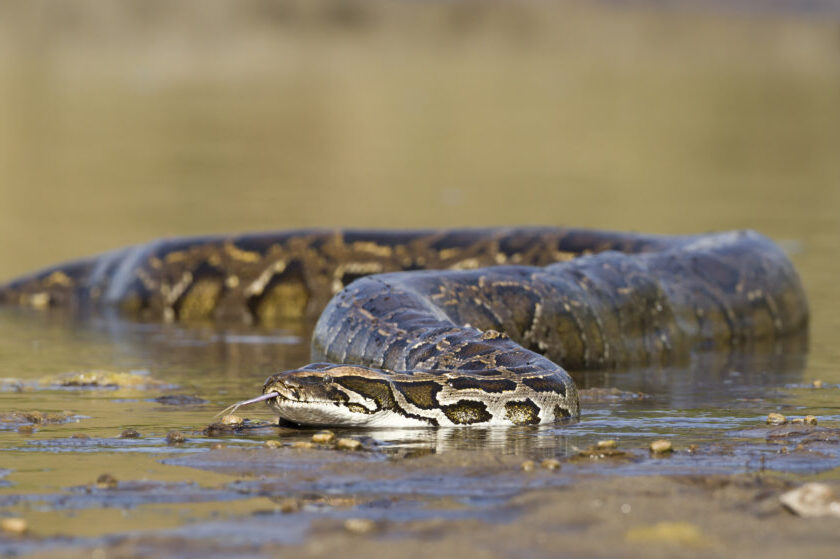
Getty Images, Utopia_88
U.S. Geological Survey has been researching the effects of Burmese pythons on the environment for years. The snakes have been breeding particularly in Everglades National Park since 2000 in what Jacquelyn Guzy, USGS Ecologist and lead author of the publication, has termed a "python invasion."
The constrictors have firmly embedded themselves in South Florida and research shows they're expanding to southwest Florida in Naples and Lake Okeechobee.
Population managers have struggled to control the invasive Burmese Pythons for years, as the snakes continue to have negative effects on the greater Everglades ecosystem. In fact, Florida Fish and Wildlife Services allow wild pythons to be humanely hunted year-round without a permit.
The problem: The massive snakes don't have many predators, but they do have a lot of prey, according to Florida Fish and Wildlife Services.
That prey includes endangered species like Key Large wood rats, but it also includes a whole lot of other native animals: Guzy's research includes looking at the digestive tracts of expired constrictors, which has shown over 76 different species eaten as food, including various mammals, birds, and fellow reptiles, the American alligator, and Green iguana. As the population invades other parts of the state, pythons will likely start to find new species to prey on, too.
Since the pythons took over, mammal populations in the Everglades have dropped dramatically. According to the USGS, a January 2012 study by Virginia Tech researchers showed raccoon populations dropped by 99.3%, opossums by 98.9%, and bobcats by 87.5% in the 11 years since pythons became embedded in the Everglades and were recognized as an invasive species. Sightings of other animals, such as marsh rabbits, cottontail rabbits, and foxes, ceased. The Virginia Tech researchers concluded that "predation by the python" is the only logical answer to the decline of the parks "mid-sized" mammals.
While python eggs are vulnerable to bobcats, adult pythons have few natural challengers. Crocodiles and alligators top the list, along with bobcats, Florida cottonmouths, black racers, and there's even some evidence of one-off, non-lethal attacks by a Florida black bear on an adult Burmese Python.
However, the larger the python, the less likely a native species will be able to take it down.
What Will Control the Python Population?
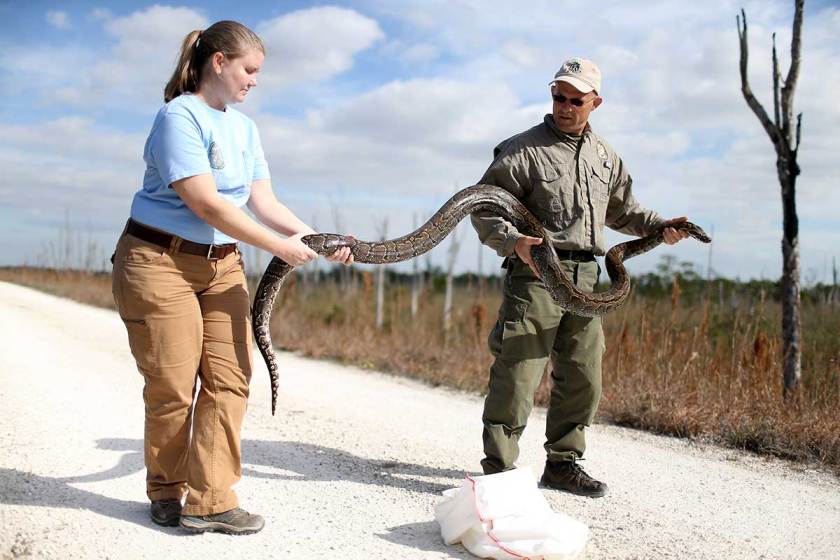
Joe Raedle/Getty
So far, the biggest threat to these slithering invaders is human hunters and cold temperatures, the latter of which Florida isn't known for.
Currently, killing the snakes is the only way to decrease the population. In fact, Florida officials have created an annual Florida Python Challenge with a $10,000 grand prize for removing the most snakes in 10 days. In 2022, over 970 people participated and 231 snakes were removed.
But with python hatches nearing 100 offspring, Florida might need to up the ante of the competition.
